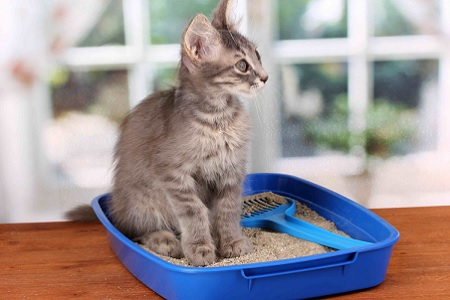When we take our animals to the vet, it can happen quite often that we are are asked for a stool sample to be analyzed. What is the use of a stool test and how is a sample collected?
What is the stool examination used for?
Dog and cat feces, but also those of us humans, are still a product of our body. For this reason, being able to analyze them allows you to evaluate some important aspects of the body, especially in the case of ailments or diseases.
It can happen, for example, that the dog or cat has intense vomiting and diarrhea. In that case the vet may be able to obtain a lot of information by analyzing the feces, in order to get as close as possible to a diagnosis.
The conditions that can be assessed by examining the stool include above all:
- Presence of intestinal parasites;
- Presence of bacteria;
- Presence of white blood cells, which indicate inflammation;
- Traces of blood in the stool.
After taking a small portion of feces, especially if soft or watery, the vet can swipe them on a "fresh" laboratory slide to look at them under a microscope.
By enlarging the stool with the microscope, it is possible to assess the presence of parasites. The most frequent ones in the intestines of our animals are above all roundworms, strongyls, tapeworms and Giardia. Normally the dogs and cats that host these parasites undergo the so-called "verminosis", with gastrointestinal symptoms, such as vomiting and diarrhea.
How are feces collected
If you ask your vet for anecdotes about the stool samples brought in by pet owners, he will surely have some fun stories to tell.
In fact, when it comes to collecting and transporting their pet's feces, owners usually give free rein to their imagination. Therefore, it can happen that the vet ends up with tons of feces or just a tiny piece. Others, on the other hand, do not bother to transport and store them properly, so they drag plastic bags and glasses containing feces that are days old or literally breaded in the cat's litter

Actually, taking a stool sample is very simple. You absolutely don't have to do anything to your pet, just wait for their urge to defecate. Get ready and take a pair of latex gloves with you on your walk.
Stand next to the cat litter box or close to your dog while he is about to defecate.
The ideal thing would be to be able to collect it immediately, especially in case of diarrhea, to prevent it from becoming contaminated by touching the ground or the sand. In reality, it will be fine even if you can't, as long as you pick it up from the ground before the cat buryes it in the litter box or confuses it with other animal feces.
Take the feces with the latex gloves carefully. If they are solid and compact you could also collect some directly with your hands, but otherwise you could use the usual scoop with which you clean the cat's litter box or a plastic spoon.
As for the amount of the sample, you don't need too much. A piece of about 2-3 centimeters will be enough.
At this point, you will have to insert the sample in a special container for feces, which you can find cheaply in the pharmacy. It is important, in fact, that the sample is sterile, to prevent bacteria from contaminating it, altering the results.
Even a jar for urine tests can do just fine, as long as it has never been opened.
How to store and transport the stool sample
The sample should be delivered the same day, at the latest within 24 hours. If you do not have the possibility to take it to the vet immediately, put it in the refrigerator or in any case in a cool and dry place, to avoid altering it.
On the way to the vet's office, if you don't live very far away, you won't need to do anything else, but if you need to take more than 10 minutes, you could use a small cooler. Special small, hermetically sealed sachets are often sold in pharmacies, especially for the short-term transport of medicines.
When you reach the vet make sure not to keep the bottle or jar for a long time in your purse or in your hands. Knock on the clinics door and hand it in trespassing the queue. At that point you can then wait for your visit.










